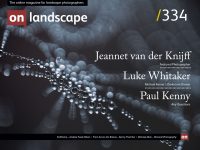Andrew Fusek Peters chooses one of his favourite images
Andrew Fusek Peters
Andrew Fusek Peters is a wildlife and landscape photographer and OM SYSTEM Brand Ambassador. He is the most widely used wildlife photographer in the national papers with over 800 photos and features and cover shots for The Guardian, The Times, BBC Wildlife, Country Life and Amateur Photographer. 'One of the country's best photographers. A man with a profound understanding of the natural world.' Iolo Williams. His five years of work on UK butterflies, Butterfly Safari is published by Graffeg. 'Incredible photos... a beautiful book.' The Guardian. 'A spectacular showcase of British Butterflies.' BBC Wildlife Magazine. Garden Safari is now out: 'Breath-taking images,’ Daily Express ‘Andrew makes the ordinary look extraordinary.
Edward Steichen (1879-1973) had a hugely varied and influential life as a painter, photographer and later, curator. His early career straddled an era when serious photography was trying to work out its own identity, still deeply influenced by art yet simultaneously trying to break free. It could be argued that The Pond – Moonlight (1904), taken in Mamaroneck, New York, near the home of his friend Charles Caffin, still stands as his most important early work. I would argue that this is not because of how it is valued in modern society – in 2006, one of three known prints sold for $2.9 million at Sotheby’s, at the time, the record for the most expensive photograph ever sold at auction. However, for me personally, as a wildlife and occasional landscape photographer, there is something much more interesting going on.
At first glance, when we look closely, we have a woodland scene reflected in a pond, a washed out blue sky as backdrop and the moon just rising beyond the trees. There is colour here, but muted and the near foreground appears indistinct as if Edward had taken a paintbrush to the reflection and swished them to a blur. Above all, there is the feeling that if this is a photograph, it is going through an identity crisis – am I a reflection of reality or am I reaching towards art?
This is, in essence, a great work of the Pictorialist movement, which desired above all else to move away from realistic depiction, from recording an image, to creating something out of that image. Generally, Pictorialist images are slightly unfocused, dreamy, printed in more than one colour and may even involve brush strokes or other interventions.

